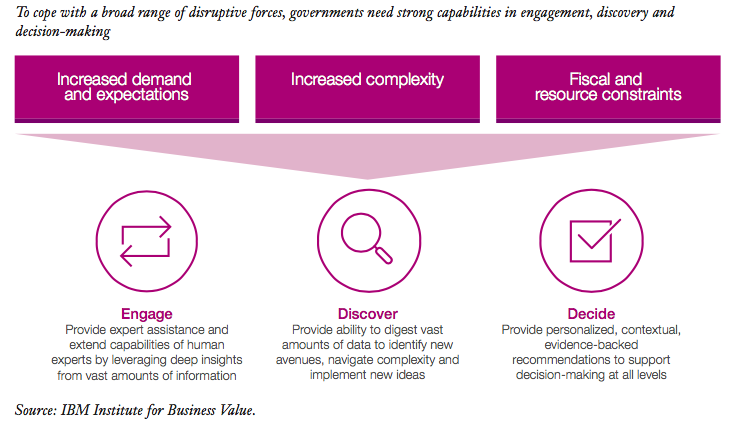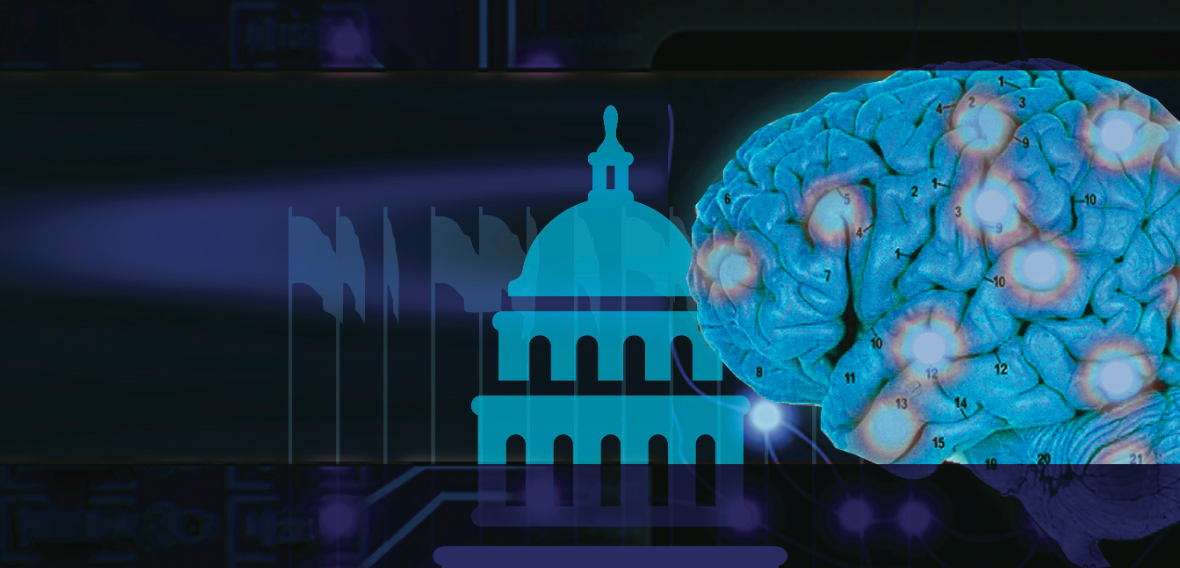Government organizations are at a crossroads between greater demands for services and increasing obstacles to providing those services. In a recent executive report based on a survey of 100 government executives across the globe, IBM proposed that cognitive computing is the answer to some of the challenges that government organizations face.
The principle behind cognitive computing is simple: use machines that simulate human brain capabilities to help solve challenging issues. An IBM white paper summed it up neatly: “Cognitive computing refers to systems that learn at scale, reason with purpose, and interact with humans naturally. Rather than being explicitly programmed, they learn and reason from their interactions with us and from their experiences with their environment.”
The development and growing use of cognitive computing is extremely timely. Government organizations are facing bigger challenges than ever; IBM discovered three main disruptive forces that governments must address.
- Increased demand and expectations: The world population is growing steadily, meaning there are more people to consume government services and products. The citizen expectations of government services are also changing. Government leaders expect that citizens will demand more personalized engagement, but many organizations are not currently equipped to handle such demands.
- Increased complexity: Geopolitical instability, such as a rise in terror attacks, international conflicts, global warming, and massive migration, increases complexity and heightens risks. The dramatic increase in data from new technology provides new opportunities for government services but also challenges in deriving and implementing useful insights.
- Fiscal and resource constraints: Many governments are predicting budget deficits, forcing organizations to do more with less money. Governments are also facing a dearth of skilled human capital. Skilled workers are one of the top external factors government leaders think will affect their organizations, but organizations have trouble finding and retaining the skilled workers they need.
These challenges seem to paint a dire picture, but for each disruptive force, there is a strategy organizations can use to cope and thrive.

In the face of increased demand and expectations, organizations can promote greater engagement with citizen audiences. By improving communications and the citizen experience, government organizations will improve satisfaction and approval of the government as well as help the economic climate. To combat growing complexity, governments can develop new tools for discovery. Revealing new insights and ideas from data agencies already have can facilitate new ways of delivering government services and achieving mission goals. Finally, under the fiscal and resource constraints that governments face, effective decision-making is more important than ever. Focusing on research and analytics to make the best possible decision will help agencies do the most with the resources they have.
Cognitive computing helps governments achieve these strategies. These systems can change the way machines and human interact, allowing for the development of effective machine-citizen engagement. Cognitive systems can collect and analyze vast amounts of information in a timelier manner than a person can, but the system also has the learning capability to interact with human users in a natural, user-friendly way.
Similarly, while human insight is invaluable in reviewing data, cognitive systems combine human intuition with machine efficiency. The systems can find insights and connections that it would be impossible for any person to discover, letting government agencies make full use of the data they already have available. Employee assistance programs will be able to use cognitive discovery to determine root causes of employment issues through analysis of historical case data and social information instead of just treating symptoms.
In decision-making settings, cognitive systems will provide human users with an array of potential choices, many of which might not have been known without the system. Because of the system’s learning capabilities, it will be able to process new developments and change the option array based on changes in information, results, and actions. Past decisions made using the cognitive system will then become new information for the system to process in future decision-making settings.
For more information on how cognitive computing is changing the way governments operate, case studies on the topics, and insights from organizations that have implemented cognitive computing, read IBM’s full report here.






Leave a Reply
You must be logged in to post a comment.